EMF headphones have become a popular topic, as people become more aware of the potential health risks associated with exposure to electromagnetic frequencies (EMFs) from electronic devices.
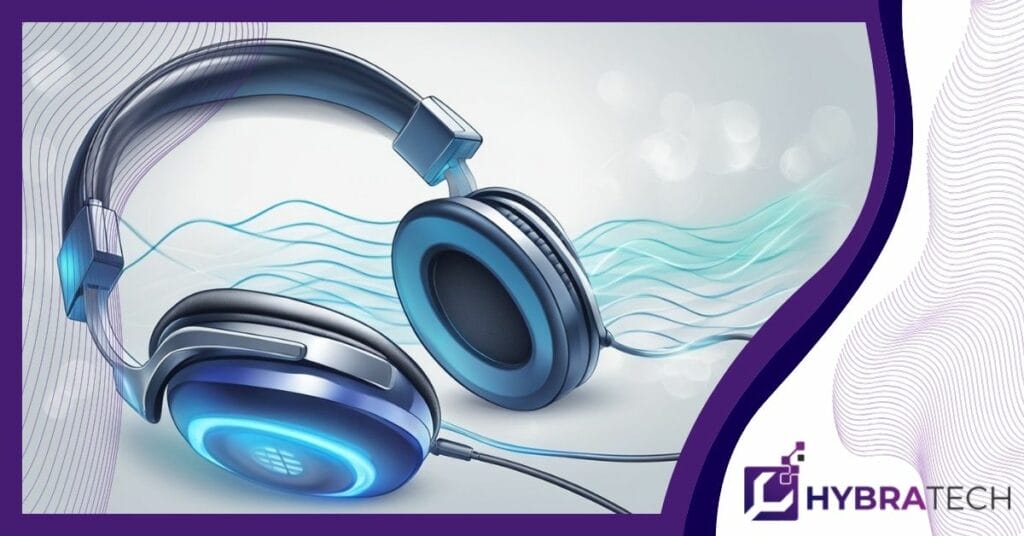
As we rely on our mobile phones, tablets, and other gadgets, we might be concerned about the potential negative impacts of these devices on our health. EMF headphones are marketed as a solution to reduce EMF exposure while still enjoying our favorite tunes or chatting with our loved ones.
Understanding the potential risks associated with EMFs and the various products claiming to offer protection is vital for making informed choices about our well-being. We’ll explore the topic of EMF headphones, how they claim to work, and whether they offer genuine protection against potentially harmful EMFs.
Key Points
- EMF headphones aim to protect users from potential health risks of electromagnetic frequencies.
- Understanding the differences between various EMF products and technologies is crucial for making informed decisions.
- Evaluating factors such as design, sound quality, price, and value can help determine the best options for EMF protection.
Understanding EMF and Radiation

EMF, or electromagnetic fields, are invisible areas of energy that are produced by electrically charged objects. They are a type of electromagnetic radiation. The term “radiation” refers to the emission of energy from any source, and it can be broadly classified into two categories: ionizing and non-ionizing.
Ionizing radiation has enough energy to ionize atoms or molecules, potentially causing damage to living organisms. Non-ionizing radiation, on the other hand, lacks sufficient energy and is typically considered less harmful.
Radio frequency radiation falls under the non-ionizing category, and it’s emitted by devices like cellphones, Wi-Fi routers, and some types of wireless headphones. This radiation is a concern when discussing EMF radiation from devices like wireless earbuds. These devices utilize Bluetooth technology for transmitting signals which emit radio frequency radiation in the form of microwaves.
Extreme low-frequency (ELF) radiation is another type of non-ionizing radiation that originates from a variety of sources like power lines, electrical wiring, and large appliances. ELF radiation comes from the magnetic field produced by electrical currents but is generally considered to be of low risk to humans.
We are constantly exposed to varying levels of radiation from both natural sources, like sunlight, and artificial sources, such as cellphones, Wi-Fi routers, and home appliances. While most of these exposures are considered safe and minimal, there is ongoing research and debate about the potential long-term effects of this radiation exposure on human health.
Health Risks of EMF Exposure

We know that Electromagnetic Field (EMF) exposure is a topic of concern for many people, and it’s essential to understand the associated health risks. EMF exposure occurs naturally from sources like the sun, but it can also come from human-made devices such as wireless headphones.
Cancer is one of the most significant concerns when discussing EMF exposure. While there is no conclusive evidence that links wireless headphones to cancer, some studies suggest that chronic EMF exposure might increase the risk of developing the disease. Bluetooth headphones, for example, emit a type of EMF known as non-ionizing radiation, which is thought to be less harmful than ionizing radiation. You can learn more about the relationship between Bluetooth headphones and cancer in this informative article.
In addition to cancer, prolonged EMF exposure has been linked to various health issues such as cell damage, reproductive problems, learning and memory deficits, and neurological disorders. Moreover, there are individuals who experience electromagnetic hypersensitivity or EMF sensitivity. This condition causes them to have adverse reactions to EMF exposure, including headaches, fatigue, and sleep disturbances.
Maintaining a focus on safety is vital when using wireless headphones or any other devices that emit EMFs. Here are some measures we can take to reduce our exposure to EMFs when using headphones:
- Choose wired headphones, which have a lower EMF output, over wireless ones.
- Limit the usage of wireless headphones.
- Keep a safe distance from EMF-emitting devices when not in use.
By being mindful of our EMF exposure and taking steps to minimize it, we can continue to enjoy the convenience and functionality of wireless headphones while minimizing any potential health risks.
How EMF Headphones Work
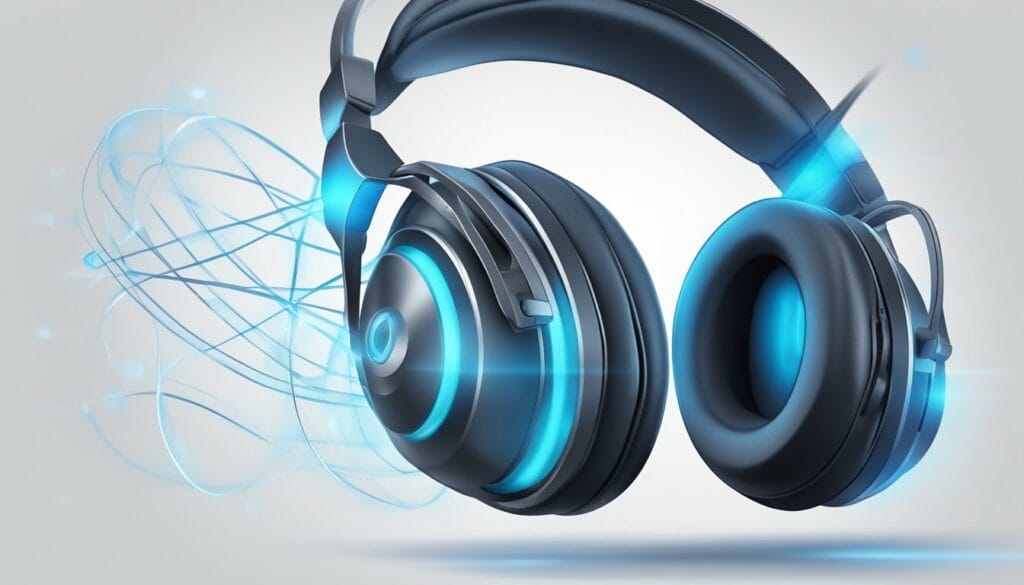
EMF headphones, also known as air tube headphones, are designed to reduce our exposure to electromagnetic frequencies (EMF) while using our devices. These headphones are a great alternative to both wired and Bluetooth headphones, as they minimize the potential radiation risks.
So, how do they work? Instead of using traditional wires to transfer sound, air tube headphones use hollow air tubes to carry sound waves. This innovative design removes the need for metal-based wires, which can conduct radiation from your device to your head.
By creating this barrier between your head and the radiation source, air tube headsets effectively reduce the chance of EMF exposure. In fact, some of the best air tube headsets claim to reduce radiation by up to 99.9% compared to holding a cell phone. This makes them a popular choice among health-conscious consumers looking for low EMF headphones.
The process of using these headphones is quite simple. You just connect them to your device, typically through a wired connection, and then the sound is transmitted through the hollow tubes.
It’s important to note that the sound quality may vary depending on the specific model or brand you choose, but many users find the audio experience more than satisfactory.
Prominent Emf Headphones in the Market
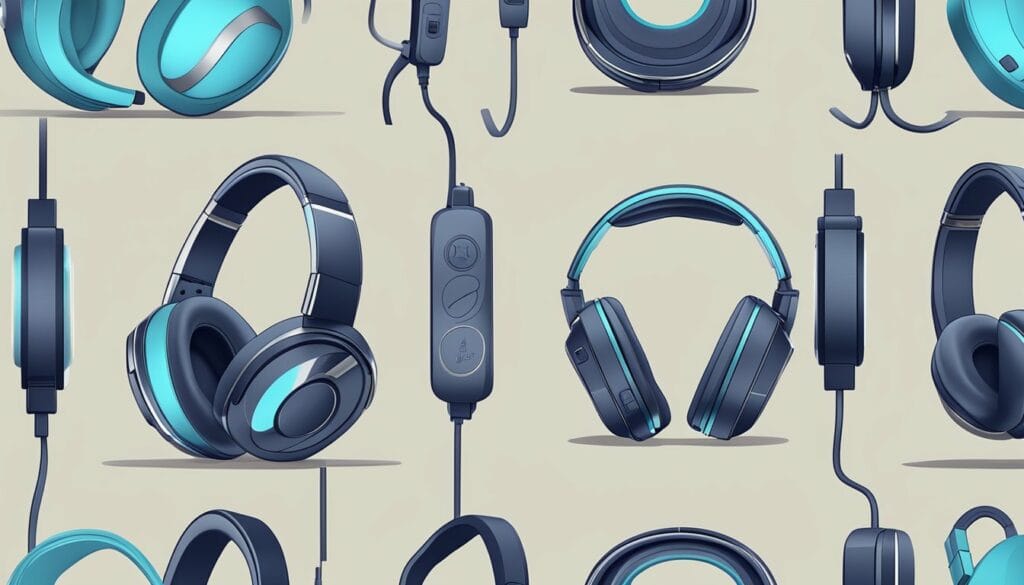
When it comes to EMF headphones, several options stand out in the market for their quality and effectiveness. One such product is the DefenderShield air tube headphones, which are known for their excellent EMF protection. These headphones offer a unique combination of comfort, durability, and top-notch radiation reduction.
AirPods, on the other hand, are popular but don’t offer the same level of EMF protection as air tube headphones. It’s crucial to be aware of this difference, especially when making conscious decisions about the technology you use daily. For a safer option, it’s essential to consider alternatives like air tube headphones and other radiation-blocking devices.
One notable product in this category is the RadiArmor air tube headphones. These headphones provide excellent EMF protection, with the company claiming that they reduce radiation exposure by 99.9%. Additionally, RadiArmor offers high-quality sound and a comfortable fit that users appreciate.
Another trusted brand in the EMF-blocking market is Dr. Mercola’s air tube headsets. Known for promoting health and wellness, these headphones prioritize safety and effectiveness in reducing EMF radiation exposure. They are designed with both quality and style in mind, making them a great choice for health-conscious consumers.
SYB is yet another company that offers reliable EMF-protective headphones. Their air tube headphones are specifically designed to block radiation while delivering an impressive audio experience. Users appreciate the comfortable fit and the added layer of protection from EMF radiation.
AirTube headphones are a popular choice for those seeking EMF reduction without sacrificing sound quality. The innovative design separates the speaker from the ear through a tube, which effectively reduces radiation exposure. Various brands continue to develop and improve this technology, making air tube headphones widely available and increasingly effective.
Lastly, Tuisy Air Tube Earbuds provide another excellent option for EMF protection. These earbuds not only reduce radiation exposure but also offer a budget-friendly solution for those looking for a combination of affordability and effectiveness.
Examining the Design

When it comes to EMF headphones, the design plays a crucial role in their performance. The build quality and durability are important factors to consider as we want the headphones to last and withstand daily usage. A combination of sturdy materials and solid construction ensures that our headphones can endure wear and tear.
An essential feature of EMF headphones is their unique wired connection. Unlike regular headphones that use a 100% wired setup, EMF headphones have a partially wired component and a section of a hollow, flexible air tube. This innovative design helps to reduce EMF exposure, as the air tube replaces the wire that directly transmits sound to our ears.
Another aspect to consider when discussing the design of EMF headphones is the microphone. Often, these headphones have microphones with noise-cancelling features, allowing for clear and uninterrupted communication. This enhancement not only makes calls more enjoyable, but it also reduces the need to expose ourselves to additional EMF radiation by taking the phone close to our heads.
The control panel on EMF headphones varies depending on the model. Some have basic functions such as volume control and track selection, while others offer more advanced features like voice-activated controls. Customizable control panels increase the convenience of using these headphones, giving us more options to adapt to our preferences.
Evaluating Sound Quality

When it comes to headphones, especially ones with EMF protection, sound quality is crucial. We want to make sure our listening experience is top-notch, with crystal clear sound that brings our favorite music, podcasts, and videos to life.
To assess the sound quality of headphones, it’s essential to test them in various situations, such as quiet environments and noisy surroundings. A good pair of headphones should provide consistent audio quality regardless of external factors.
One common issue people face when using headphones is crackling sounds that can be quite annoying and interfere with the sound experience. This issue could arise due to various reasons, as explained in this helpful guide. Identifying and resolving these issues will ensure your headphones consistently deliver the best sound possible.
Another aspect of headphone sound quality is soundstage, the ability of the headphones to create a sense of space and positional accuracy. A well-defined soundstage can give you an immersive listening experience, making you feel like you’re in the middle of a live concert.
Assessing Price and Value

When it comes to EMF headphones, it’s essential to assess their price and value before making a decision. We understand that there’s a wide range of options available, with varying price points and features.
Firstly, consider the price of the EMF headphones. It’s crucial to establish a budget before diving into the numerous options available. Affordable options can still offer excellent performance while ensuring protection from EMFs. Some of the best cheap Bluetooth headphones provide a balance between cost and quality.
Additionally, it’s important to take note of the headphones’ features and how they impact the overall value. Features like comfort, sound quality, and durability can significantly affect your satisfaction with the product. Don’t ignore these factors, as they contribute to the overall user experience.
Moreover, we recommend doing thorough research to compare various models and their features within your budget range. Reading reviews and asking for recommendations from friends and online communities can provide valuable insights into the true value of a specific model.
Finally, remember that price and value go hand in hand. While it may be tempting to opt for the cheapest option, investing in a higher quality product with better features might prove to be a wiser, more cost-effective decision in the long run. It’s essential to find a balance between price and the value a product offers to ensure the best outcome for your health and pocket.
Emf Protection and Other Anti-Radiation Products

When it comes to EMF protection, there are various products available that aim to reduce or block electromagnetic radiation. Let’s take a look at some of the common anti-radiation products, including EMF protection cell phone cases, anti-radiation headsets, laptop shields, and other EMF protection devices.
EMF Protection Cell Phone Cases – Many people turn to EMF protection cell phone cases for added safety when using their mobile devices. These cases may provide a barrier between the user and the device, potentially reducing radiation exposure. However, it’s important to remember that not all cases offer adequate protection, so thorough research is essential.
Anti-Radiation Headsets – Some headsets, such as air tube headsets, claim to offer EMF radiation protection by using a unique design. Instead of traditional wires, these headsets use hollow tubes filled with air, reducing the flow of electromagnetic radiation to the ears. While these headsets may offer some level of protection, it’s essential to compare different options and consider user reviews before making a purchase.
Laptop Shields – Using a laptop directly on your lap exposes you to EMF radiation. As a preventative measure, people often use laptop shields as a barrier between themselves and their device. These shields are designed to minimize EMF exposure and absorb some of the radiation emitted by laptops, making them a useful addition to your arsenal of EMF protection products.
Other EMF Protection Products – In addition to the options mentioned above, many other EMF protection devices exist, such as crystals, neutralizers, and even bed canopies. Some proponents of these methods argue that they help manage EMF exposure, and are valuable in creating a safer environment. Keep in mind that their efficacy may vary, and it’s essential to research each product thoroughly to determine the best option for your specific needs.
Measuring EMF: The Role of EMF Meters
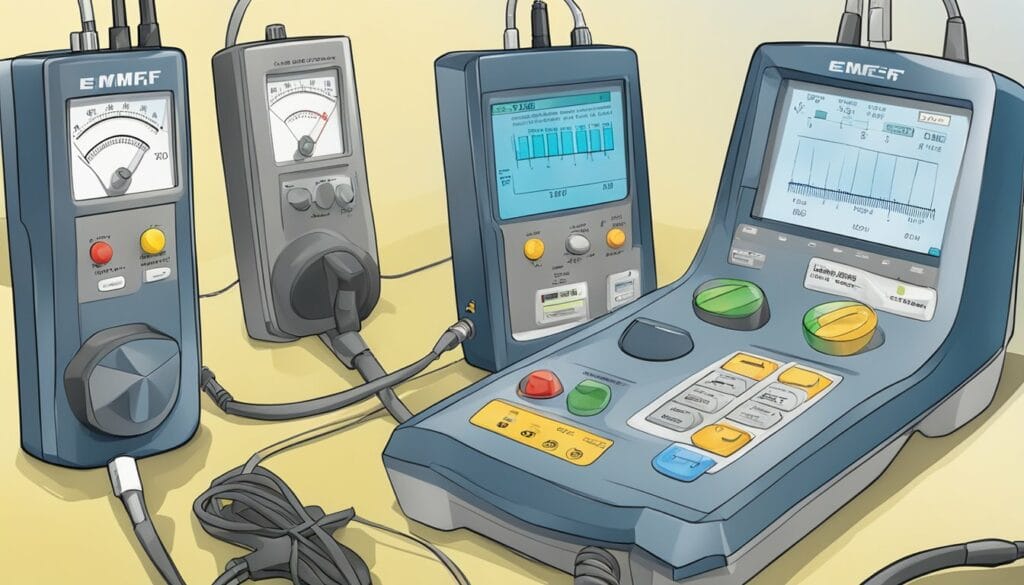
We often hear about the potential dangers of electromagnetic fields (EMF) and their impact on our health. One way to measure and analyze these fields is by using an EMF meter. EMF meters are scientific instruments designed to detect electromagnetic radiation flux density. They can measure both DC fields and changes in an electromagnetic field over time (AC fields).
When using an EMF meter, it’s essential to hold it correctly to acquire accurate readings. There are two common ways to hold the meter – vertically and horizontally. When holding it vertically, we should rotate the meter 360 degrees to find the highest radiation levels. Similarly, when holding it horizontally, we should also rotate the meter 360 degrees to observe the changes in the readings.
It is important to note that EMF meters measure the strength of the radiation, not the frequency. This means that they can help us identify sources of man-made EMFs and assess our exposure levels to these fields. By properly utilizing an EMF meter, we can take preventive measures to reduce our exposure to potentially harmful electromagnetic radiation.
Bluetooth and Wifi: Understanding the Differences

When it comes to wireless technology, there are two common methods for transmitting data: Bluetooth and Wifi. In this section, we will discuss the differences between these technologies, focusing on their key characteristics like range, speed, and application.
Bluetooth is a short-range wireless technology, primarily designed for connecting devices within close proximity. Some typical uses for Bluetooth include connecting headphones to your phone or pairing a keyboard with a computer.
Bluetooth’s range varies depending on the device’s class, with most consumer gadgets having a range of about 10 meters or 33 feet. However, some Bluetooth devices can reach up to 100 meters under ideal conditions.
On the other hand, Wifi is a wireless technology designed for connecting devices to a local network or the internet. Wifi is most commonly used for devices like smartphones, laptops, and tablets to connect to the internet through Wifi routers. The range of Wifi is generally much greater than Bluetooth, with most home Wifi networks covering an entire house and some even extending into the yard.
In terms of speed, Wifi is generally faster than Bluetooth. Wifi can offer speeds of up to 1000 Mbps (depending on the router and the internet plan), whereas Bluetooth can reach up to 24 Mbps. This makes Wifi the better choice for data-intensive tasks like streaming high-definition video or downloading large files.
There are also differences in how devices pair and communicate with each other. Bluetooth devices usually require a direct pairing process, which involves establishing a connection between the devices by entering a passkey or manually confirming the connection. With Wifi, devices connect to the network through a router, and can access internet resources or communicate with other devices on the network without a direct pairing process.
Are EMF Headphones Really Safe?
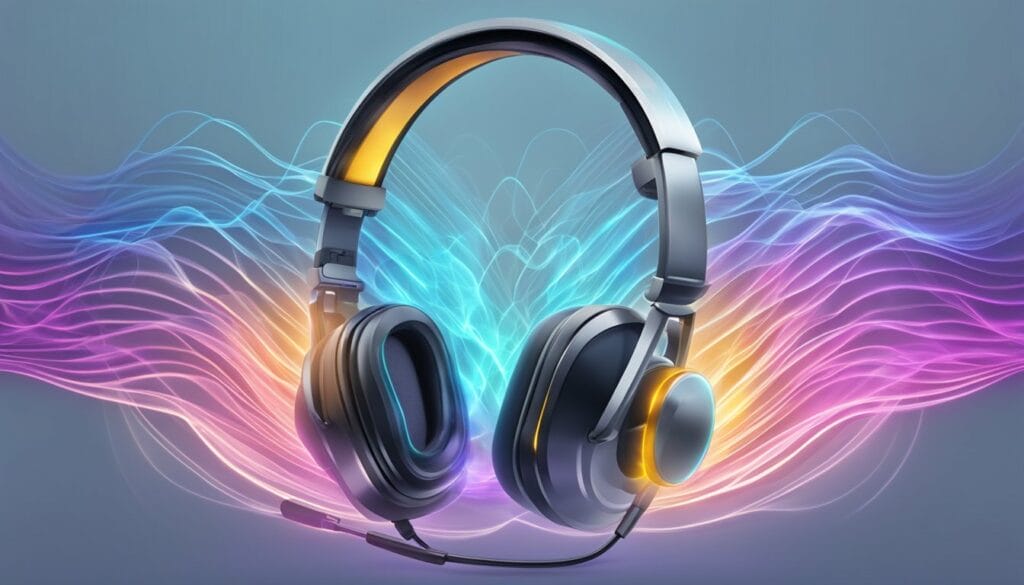
When it comes to the safety of EMF headphones, many people wonder if these products are truly effective in protecting our ears from harmful electromagnetic radiation. The good news is that there are several EMF protection devices available on the market, which can significantly reduce our exposure to this type of radiation.
Air tube headsets are a popular option for those looking to minimize EMF exposure. These unique headphones use hollow, clear air tubes to transmit sound from the device to the ear. This design effectively stops any EMF radiation from reaching our ears, providing a safer experience compared to traditional wired or Bluetooth headphones. In addition, these air tube headsets are often more comfortable to wear, which is an added bonus.
However, it’s essential to maintain a realistic perspective on the level of protection provided by EMF headphones. While air tube headsets and other EMF protection devices can effectively reduce our exposure to electromagnetic radiation, they may not completely eliminate all risks. For example, driving while wearing headphones raises safety concerns unrelated to EMF exposure and may even be illegal in some areas.
It’s also important to recognize that relying solely on EMF headphones might give us a false sense of security. Remember, these devices mainly protect our ears, but other parts of our body remain exposed to electromagnetic radiation. As a result, it’s essential to adopt holistic measures to minimize overall exposure, such as using wired connections, turning off Wi-Fi when not in use, and practicing digital detoxes.
Final Thoughts on EMF Headphones
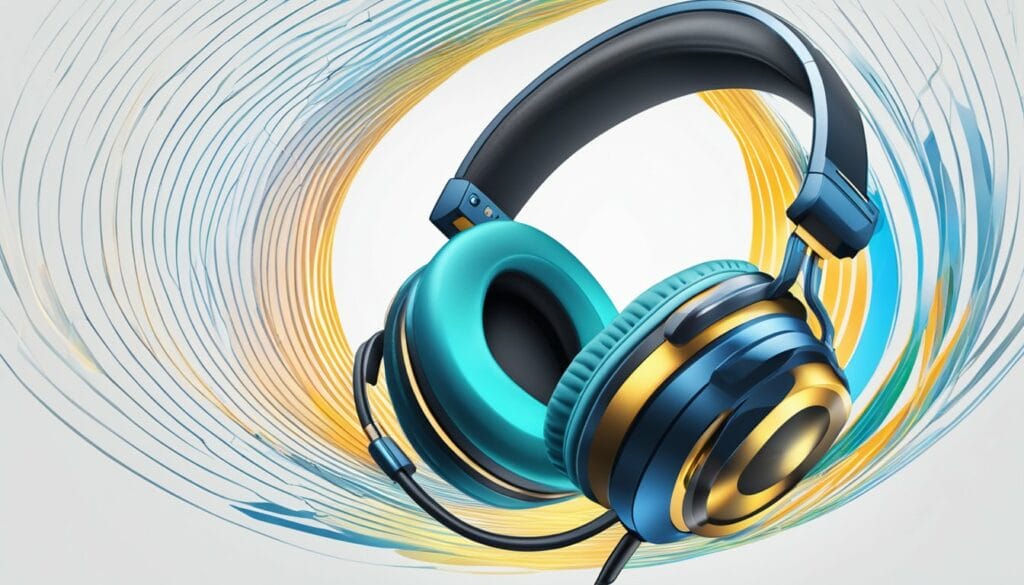
We can’t deny that there’s been an increased concern about the impact of EMF exposure, especially with the advent of 5G and the proliferation of wireless devices. This has led many companies to develop different types of products aimed at reducing or mitigating EMF exposure. Among these products are EMF headphones, which promise to deliver a safe and sound listening experience.
There’s no guarantee that every EMF headphone out there works the same way, but some products actually do a great job at minimizing EMF exposure. One example is Airtube headphones. These headphones work by using a speaker at the end of a tube of air, which allows the primary radiation source to be farther away from the head.
This, in turn, reduces exposure to EMF radiation from devices like wireless headphones that use radiofrequency communication, such as Bluetooth source.
We should keep in mind that the scientific consensus is that both Bluetooth and wired headphones’ radiation is considered safe source. However, if you’re concerned about EMF exposure or want to err on the side of caution, using EMF headphones could be a wise choice.
As we navigate the world of EMF exposure, it’s important for us to stay informed about the risks, benefits, and available solutions. By choosing the right products and being mindful of our exposure, we can enjoy a more worry-free digital experience.
- Are Wired Headphones Safer Than Bluetooth? A Friendly Guide - January 8, 2024
- Can Fitbit Versa 3 Answer Calls? A Quick Guide for Users - January 7, 2024
- Can Fitbit Versa 2 Answer Calls? Find Out Here - January 7, 2024
